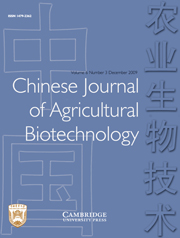No CrossRef data available.
Article contents
Isolation and primary function detection of Nile tilapia (Oreochromis niloticus) β-actin promoter
Published online by Cambridge University Press: 01 October 2008
Abstract
A 5′-flanking region and partial open reading frame (ORF) of the β-actin gene (GenBank accession No. EF026001) of Nile tilapia (Oreochromis niloticus) was cloned by polymerase chain reaction (PCR) amplification. The segment included a 1643 bp regulatory sequence and a 90 bp partial ORF which encoded a 30-amino-acid peptide. The regulatory sequence comprised a 108 bp 5′ proximal promoter, the first untranslated exon and the first intron of the β-actin gene. The proximal promoter region contained elements that were critical for transcription activity, including a CCAAT, TATA and CArG box located at –92, –29 and –62 bp upstream of the transcription initiation site, respectively. The regulatory sequence was inserted into the promoterless pDsRed2-1 vector to construct the expressing vector pNA-DsRed. The linearized pNA-DsRed was microinjected into the fertilized eggs of Tanichthys albonubes. The expression of the DsRed2 gene in transgenic fish could be observed under the microfluoroscope and anatomical lens. The results showed that the β-actin gene promoter possessed effective transcription activity.
- Type
- Research Papers
- Information
- Copyright
- Copyright © China Agricultural University 2008
Footnotes
First published in Journal of Agricultural Biotechnology 2008, 16(2): 242–247


